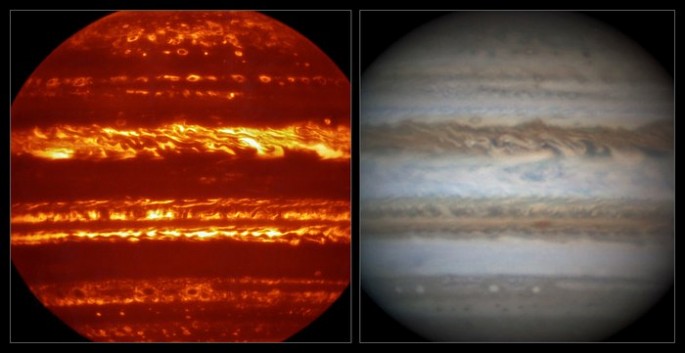Fantastic new images were captured by NASA's Juno spacecraft that is currently en route to Jupiter, as the probe is only a week away from its arrival on the giant gas planet.
Using the European Southern Observatory's Very Large Telescope, astronomers from the University of Leicester scanned Jupiter using infrared and visible light spectrums which is part of NASA's mission to explore the largest planet of the solar system.
Juno was launched in 2011, as it is now expected to complete its rendezvous with Jupiter on July 4. The mission will also carry out 37 approaches in a span of one year. Some of these closest approaches will explore the upper atmosphere and magnetosphere of Jupiter as well.
In preparation for this mission, scientists have collected data and began mapping out the planet to anticipate the atmospheric conditions when the probe arrives. Apart from the VLT, powerful telescopes in Hawaii and Chile including amateur photos from citizen astronomers are consolidated to further understand the current atmospheric conditions of the planet that might affect Juno's orbit.
According to Juno principal investigator, Glenn Orton from NASA's Jet Propulsion Laboratory, combined efforts from an international team of professional and amateur astronomers have provided NASA a rich dataset in the last eight months or so.
These new images of Jupiter were revealed by ESO and the University of Leicester by using a method known as "lucky imaging" that involves capturing thousands of short exposure photos and combining them into a single image using the VLT's Imager and Spectrometer for mid-Infrared instrument.
According to astronomer Leigh Fletcher from the University of Leicester, on this wavelength, the cloud formations on Jupiter appear as a silhouette from the deep internal glows of the gas planet. The quality of these new images can provide a global context when Juno retrieves closeup views of the planet on the same wavelength.
Orton adds that these new images from Juno along with this rich dataset can allow researchers to describe the gas giant's global thermal structure, its cloud cover and gas species distribution and eventually provide answers for Jupiter's dramatic atmospheric changes and hidden processes.



























